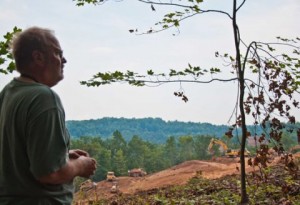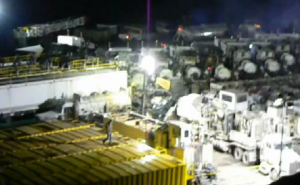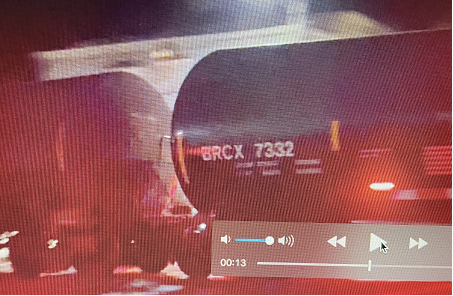Letter from Chemung County Jail – Part II
April 22, 2013EPA wants State Dept. to rework analysis of Keystone XL pipeline
April 23, 2013You Have to See It to Believe It: What It’s Like to Have Fracking in Your Backyard
Residents in industry-friendly West Virginia share their experiences, photos and videos. April 15, 2013
From Alternet, by Tara Lohan
Click here for complete article
This article was published in partnership with GlobalPossibilities.org.
Ed Wade’s property straddles the Wetzel and Marsh county lines in rural West Virginia and it has a conventional gas well on it. “You could cover the whole [well] pad with three pickups,” said Wade. And West Virginia has lots of conventional wells — more than 50,000 at last count. West Virginians are so well acquainted with gas drilling that when companies began using high-volume horizontal hydraulic fracturing in 2006 to access areas of the Marcellus Shale that underlie the state, most residents and regulators were unprepared for the massive footprint of the operations and the impact on their communities.
When it comes to a conventional well and a Marcellus well, “There is no comparison, none whatsoever,” said Wade, who works with the Wetzel County Action Group. “You live in the country for a reason and it just takes that and turns it upside down. You know how they preach all the time that natural gas burns cleaner than coal; well, it may burn cleaner than coal, but it’s a hell of a lot dirtier to extract.” …
But water is just one of the issues. For those living near fracking sites, life itself is drastically changed. Diane Pitcock and her husband and son moved from near Baltimore, Maryland to a rural haven of over 100 acres in New Milton, West Virginia six years ago. Their timing couldn’t have been worse. “It’s so sad because we never moved here expecting this,” said Pitcock, who has started an organization called West Virginia Host Farms Program to call attention to what is happening in her community. Her neighbor leased his property to Antero Resources and now the Pitcock’s land abuts a drilling site known as the Ruckman well pad of the Erwin Valley Project. “It’s four separate well pads on his land, having 27 individual permits for horizontal legs,” she explained.
In July, the forest at her property border was so think you couldn’t see the sky, she said. Three weeks later the forest had been cleared with earthmovers and much of it burned in massive piles.





